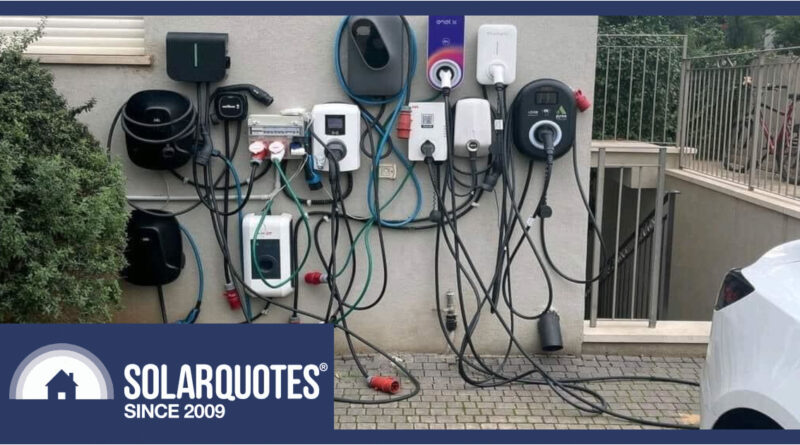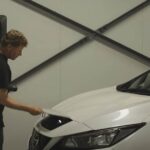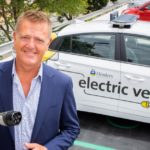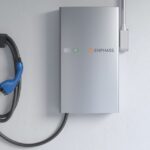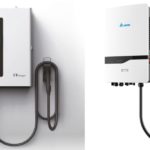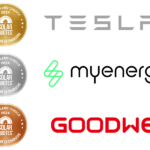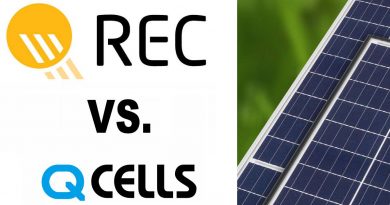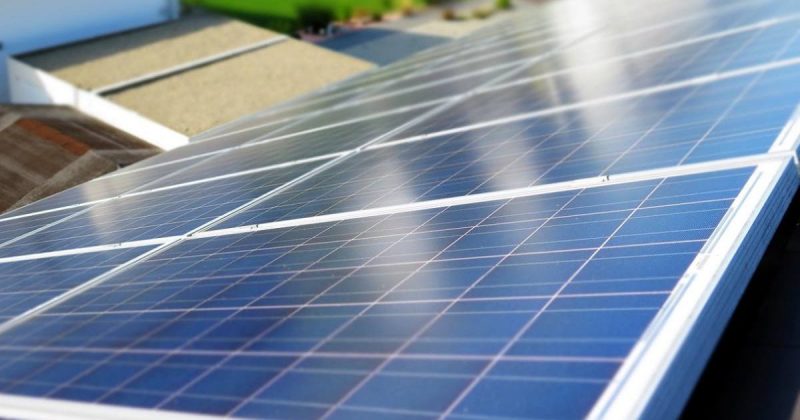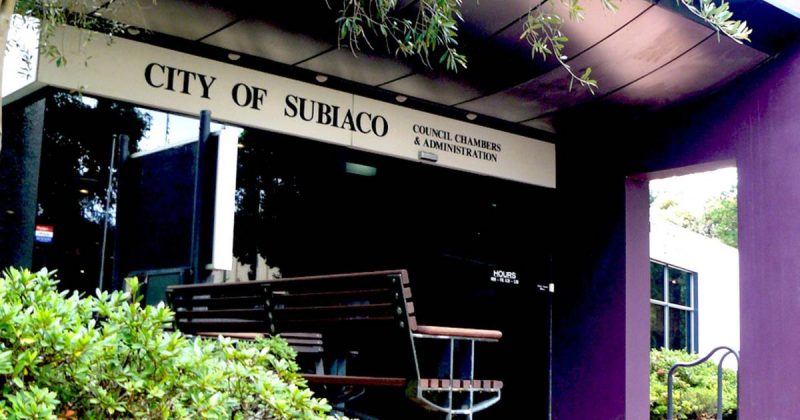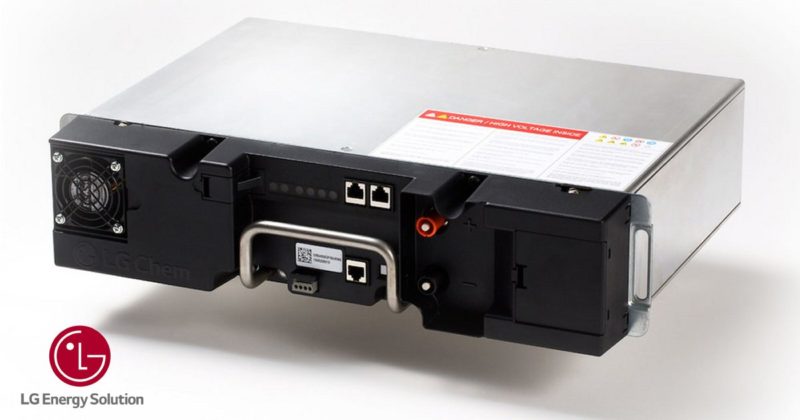Beyond Tesla: An Australian Installer’s Take On EV Chargers
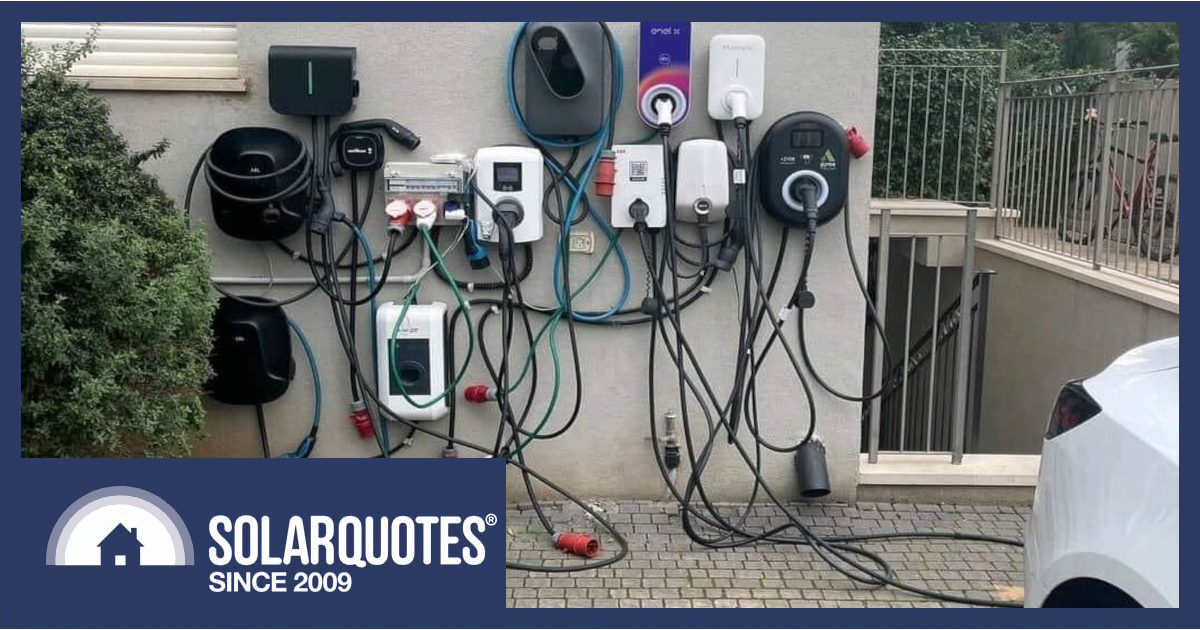
It’s early days for most Australian electricians when it comes to deciding which EV chargers they will offer going forward.
Several strong contenders emerge based on discussions with fellow electricians, but surprisingly, despite its reasonable price and quality construction, Tesla’s wall charger isn’t at the forefront. Lacking smart features, the Tesla charger misses the opportunity to be an obvious choice in the market.
Let’s Get Bi-Directional Charging Out Of The Way
Any post about EV charging always attracts tons of questions about bi-directional charging. So let’s address that first.
Currently, the only available option is a CHAdeMO-equipped vehicle paired with a Wallbox Quasar. However, connection approval is limited to South Australian residents.
Interestingly it appears that Tesla has now decided to enable bi-directional charging around 2025, but they’ve made noises about it before now. We’ll have to see it to believe it.
And the development of CCS standards to enable bi-directional charging – CCS2 – still hasn’t been finalised. When I spoke to a rep from Tritium at the most recent All Energy conference, he said that
“CCS2 is two years away”,
So while a bi-directional solution is available on the market now, the Wallbox Quasar is rumoured to be getting replaced with the Wallbox Quasar 2 in Q4 2023, which should be ~40% cheaper.
What Do Electricians Look For In An EV Charger?
When comparing EV chargers, installers primarily look for one thing: quality. And that comes in the form of the Fronius Wattpilot.
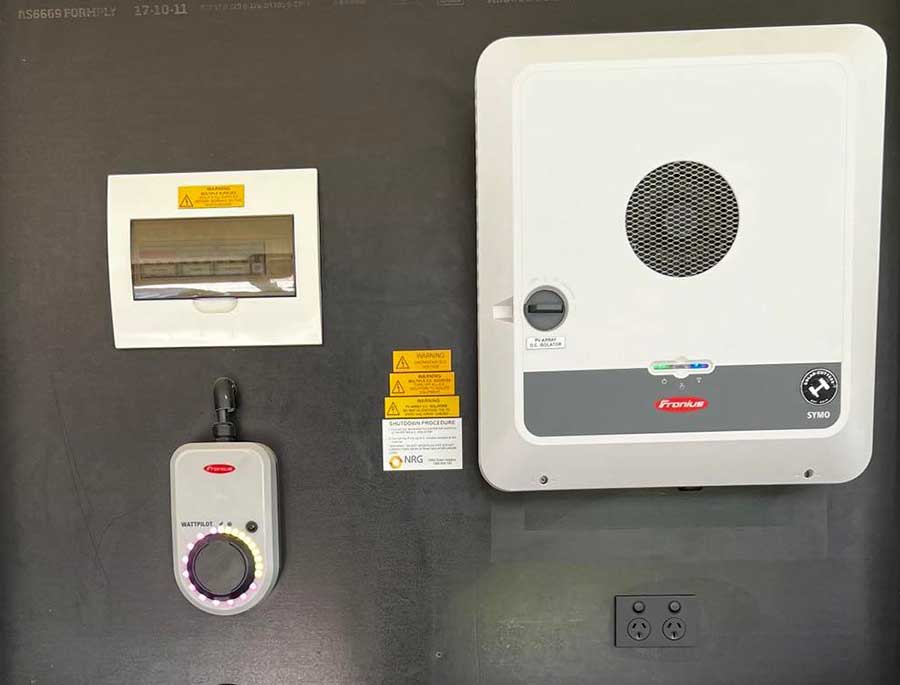
It’s smart, connects with WiFi, offers great functionality, and we have a good write-up of these excellent devices, so I would encourage you to read that for the nitty gritty because there are some vagaries to get across in terms of capacity.
Everyone, except Finn, reckons the next best thing is a Zappi.
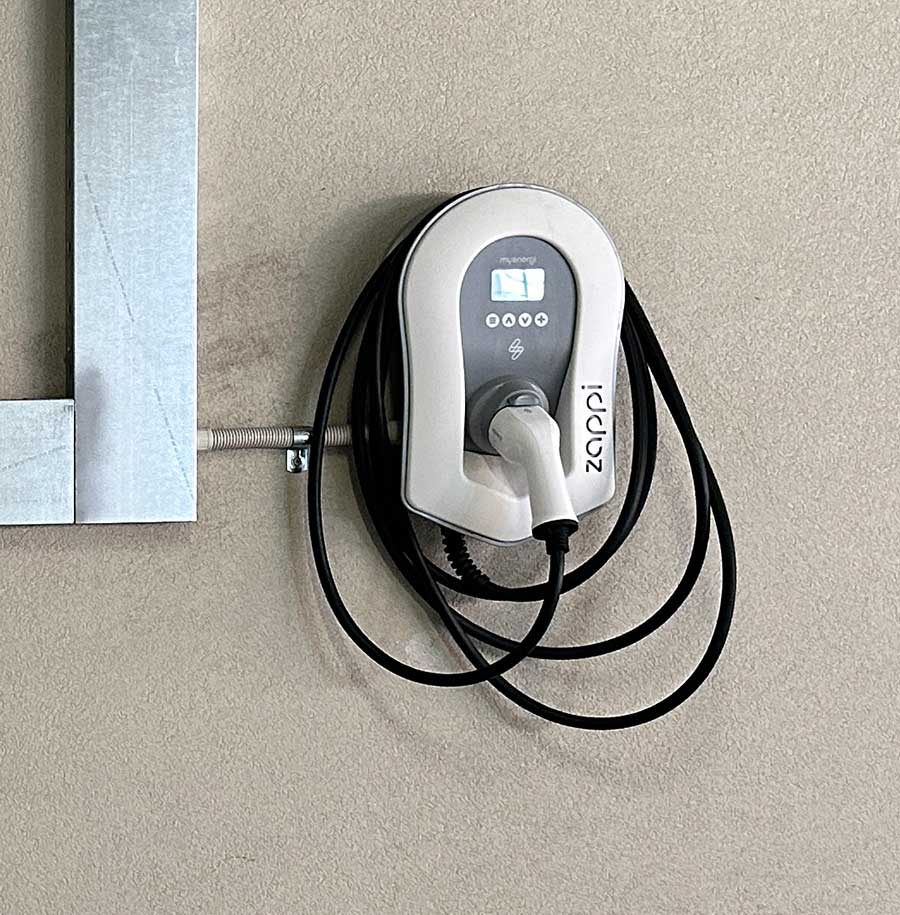
Zappi 2 EV Charger manufactured myenergi.
The Zappis have been on the market for some time and must have proven themselves as well-regarded amongst solar installers. There are certainly some good features on offer, so perhaps the best advice I can offer is – to install them in the shade. And don’t share any experiences of Zappis failing – unless you enjoy receiving threatening legal letters😝1.
Tesla isn’t a third-rate option but has come third in my conversations.
Neither the Tesla nor the Zappi talk OCPP, which means you can’t upgrade their functionality using an external API control such as ChargeHQ.
Zekicharge products offer some interesting models which are being rolled out to replace Tesla chargers in many places. Why change a working charger? Well, to paraphrase the people involved,
“Tesla owners are the worst”
And by that, he meant that they would pull up at a cafe and hog the free charging bay for hours. By installing a pay-as-you-go charger which also bills for parking (once you’ve finished charging and not moved on), everyone gets a fair go at their favourite cafe.
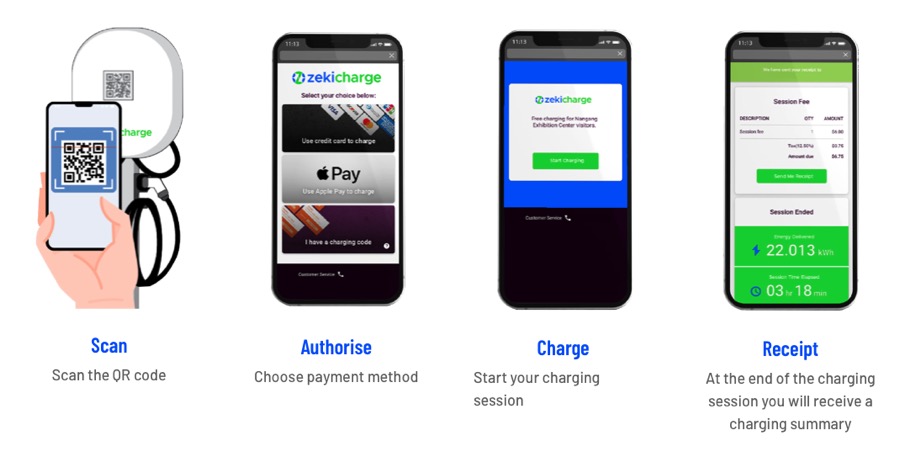
Zekicharge units can charge for kWh used. But after the car’s stopped charging, they can also charge for parking (or ‘idling’ time)- encouraging drivers not to hog the charger.
Wall Box Pulsar also rates a mention if for no other reason than it’s a really compact unit. There’s a selector switch for you to vary the demand if required. I have installed one myself, and spacing it off the wall meant it even became a good place to coil the tethered charger lead. However, the app, which is what you need to make settings, is rubbish.
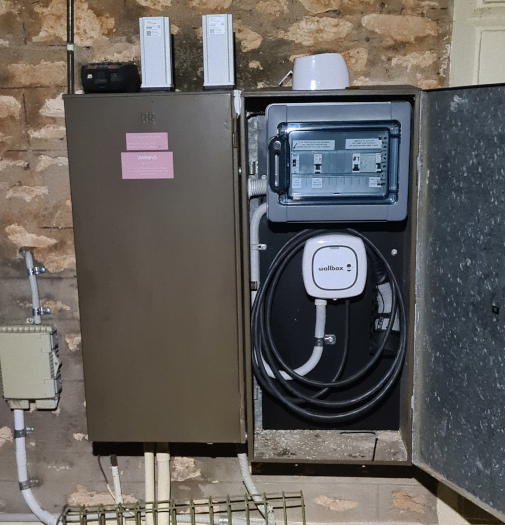
Wallbox is a tiny device really.
Off-Grid EV Charging
For the off-grid customers, you would think that Victron would be all over car charging with their new smart box, however, I understand that it seems to be a beta product, and there are bugs to be ironed out.
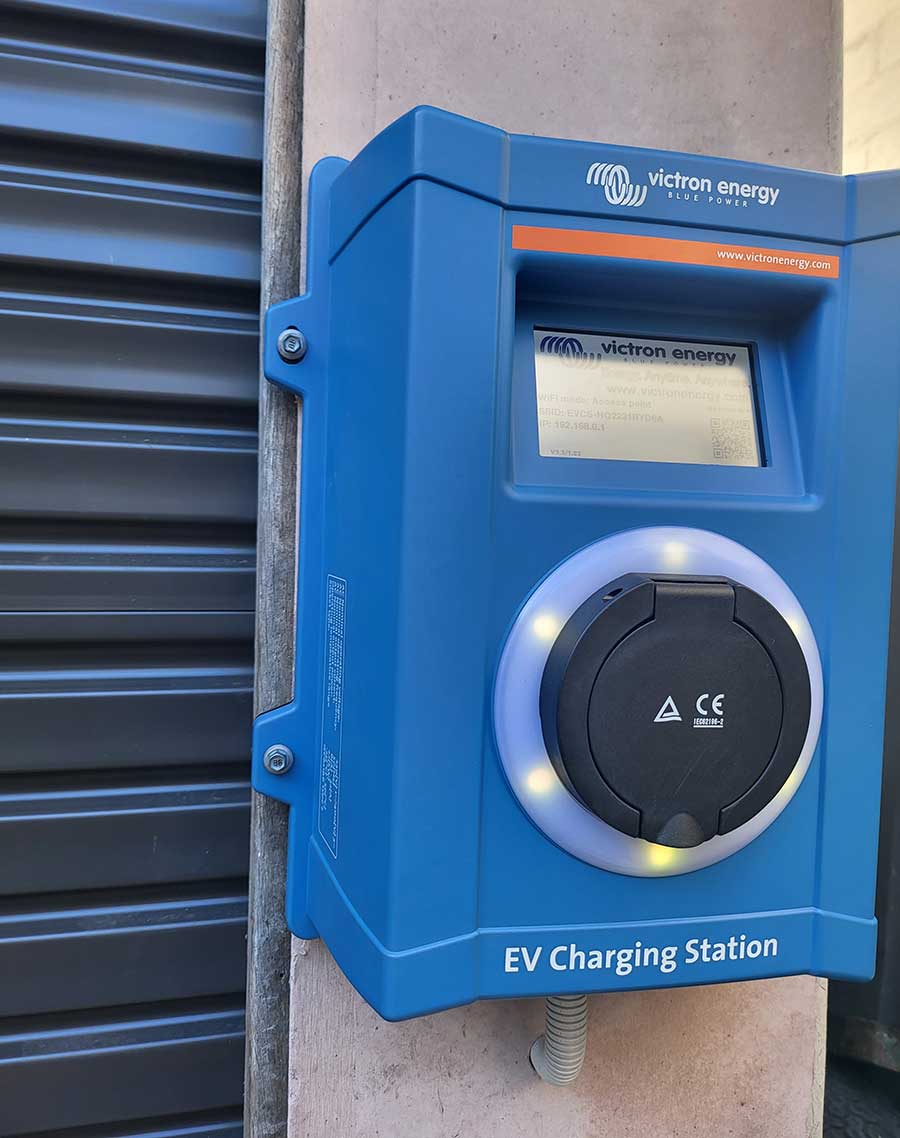
Victron’s bi-directional EV charger. As with most Victron products, it should work well off-grid.
However, the Schneider EVB1A22P4RI smart wall box has 24vDC digital inputs for on/off and ramp power output, which makes it suitable for off-grid systems where integrating charging is more critical than anywhere else.
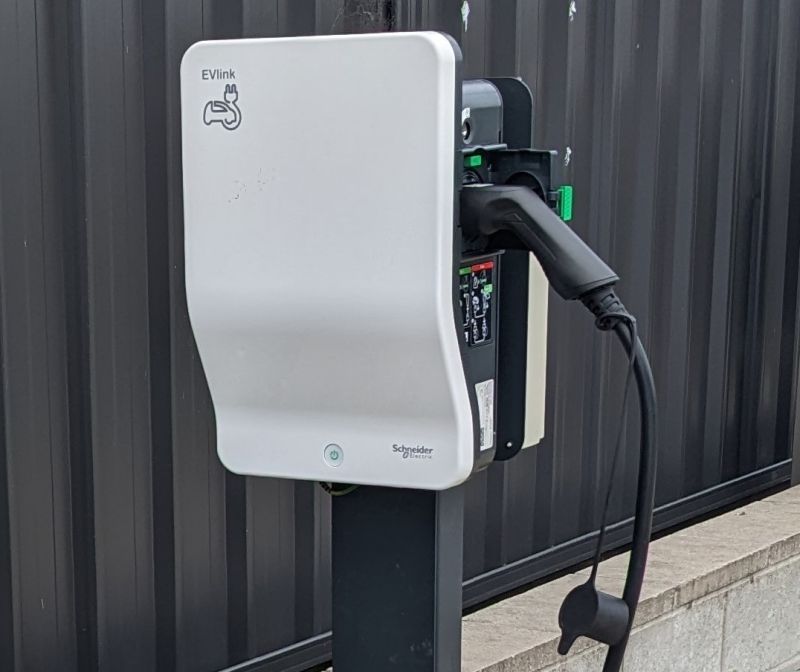
Schneider EVB1A22P4RI Charger – can control other appliances to manage demand in an off-grid system.
It’s something that Selectronic have a solution for, provided you have a compatible charger.
OCPP – Open Charge Point Protocol
Whatever charger you choose, the best advice I can offer is to get one with OCPP 1.6 connection protocol. What this means is that your charger can talk to external services, be it your own smart services that can divert solar yield into charging the car or just as importantly, the DNSP/grid operator which may need to turn your charger down when the grid is under peak load. This is already being done with DRM (demand response management) capability for air conditioners and solar inverters. Some schemes are voluntary, others compulsory and some are even incentivised with payments and will also be used by virtual power plants.
The Grid Has Capacity – If We Smart Charge
This graph shows how the South Australian grid is changing.
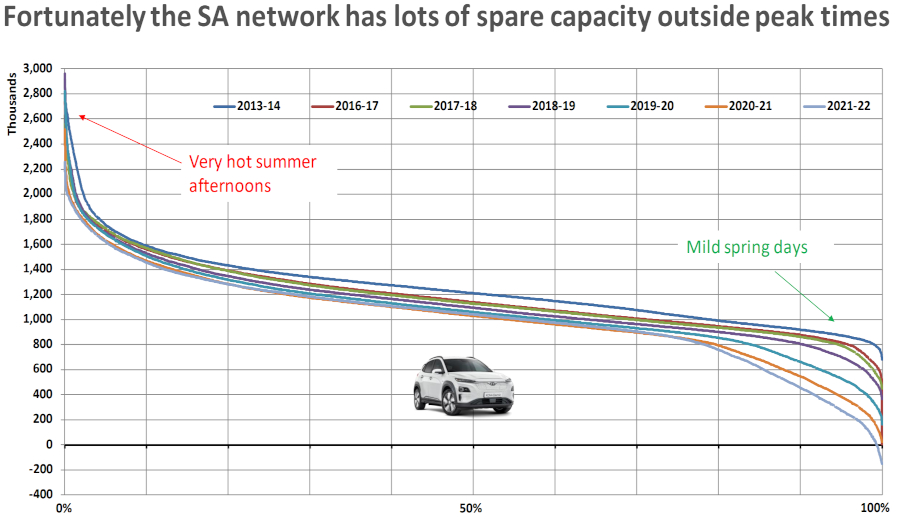
Here on the left, we have the handful of hours on the handful of days where the grid approaches overload, while on the right, we see increasingly that there are more and more times when there is virtually no load because all of South Australia’s energy is coming from rooftop solar. The vertical axis shows the total demand in megawatts, while the horizontal axis shows how much energy is being generated behind the meter by rooftop solar.
At the far right, when the curve crosses the dark, horizontal line at zero we need to be charging cars because there’s abundant energy that will otherwise just be curtailed. Think of it as rainfall. We could be putting it in tanks instead of watching it go down the stormwater drain.
Where OCPP and other demand response technologies come in is making sure that SAPN can keep a lid on things at the very extremes of this graph. Flexible solar exports mean generation can be curtailed on mild spring days, while car charging and air conditioning can be toned down on very hot afternoons.
Smart Charging Is Not For Everyone
Car charging needs a lot of energy over a lot of hours, and if you don’t have a very large solar PV system and some nice sunny days, then a simple charger and a timer is a simple solution that ensures you only charge from off-peak grid electricity, or when the sun is most likely to shine, or both.
Off-Peak Connections and Daft Rules
Local electricity providers, known as DNSPs, encourage the use of off-peak tariffs for electric vehicle chargers. These off-peak rates are expected to transition to daytime “solar sponge” rates in the near future. As a customer, it’s important to know that when the new daytime “super” off-peak rates are introduced, your car might not charge overnight if it is set to charge exclusively on the lowest-priced tariff.
Many off-peak plans provide a restricted power supply, allowing for a maximum load of 7kW/32A to be connected. Current DNSP regulations also state that only one off-peak load is permitted at any given time. This means you cannot charge your electric vehicle and heat water simultaneously, even if your charger is designed to manage the loads. As renewable energy sources increasingly contribute to the grid, such rules will have to go.
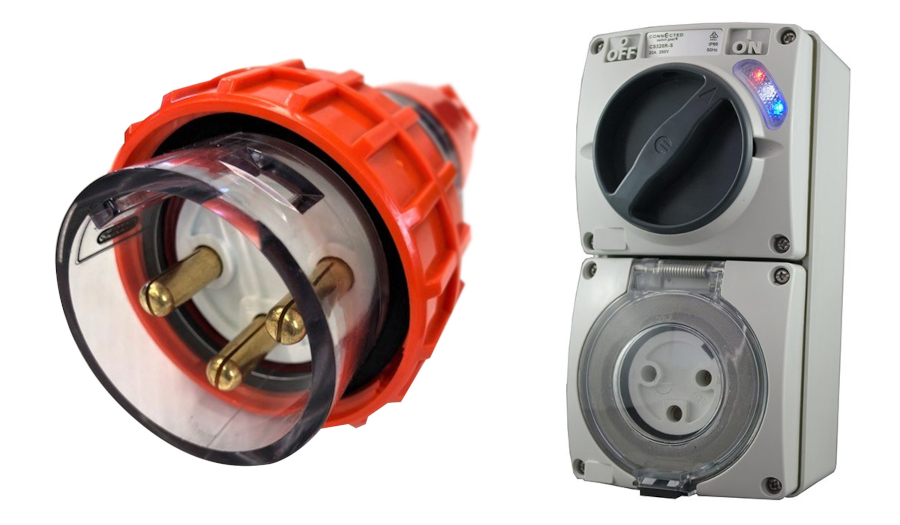
Round screwed connector, not dissimilar to a 3-phase socket outlet and plug.
If you have a single-phase supply in the sunshine state, then the recalcitrant Queensland DNSPs have (yet another) silly requirement. They will not allow a 7kW/32A charger on an ordinary single-phase service unless the charger is connected to an off-peak tariff.
You can only have a 4.6kW/20A car charger on your regular supply. While this means you could charge your car with some of your own solar yield, it’s still an artificial limit that defeats the purpose of electrification in the first place.
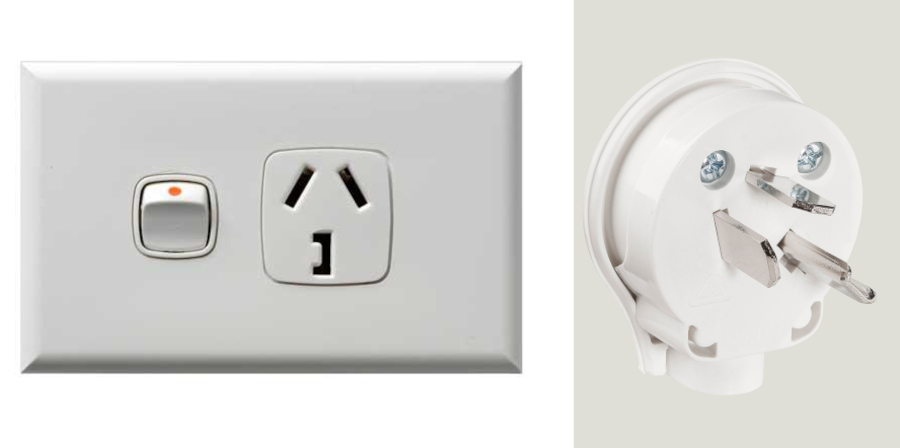
Yes, you can get a 32a wall plate which accepts a standard plug too.
If you have a 3-phase supply, then these restrictions don’t apply, but upgrading the supply to a house can be an exceptionally expensive exercise if you have to dig across the road, for instance.
So what some electricians are doing to push back is simply installing a 32A general purpose outlet… and then whatever the customer chooses to plug into that outlet is up to them. It’s an approach that makes some sense because it means you can take your charger away if it needs repairs or take it to your Mum’s house when you visit. Whether it is breaking the rules… You’ll have to ask your local electrician.
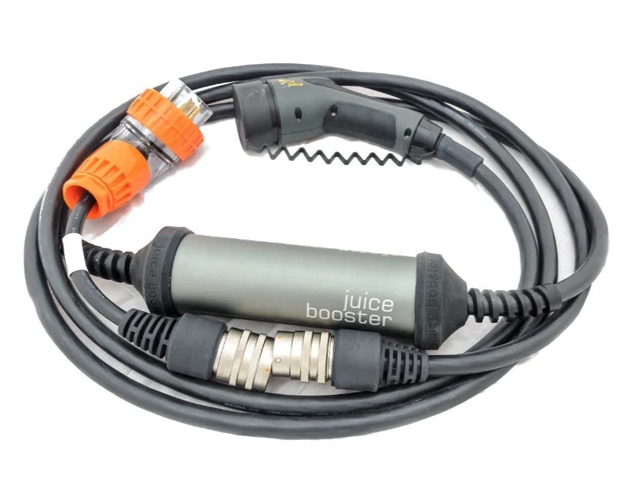
Portable chargers such as the Juice Booster can plug into a 3-phase socket and charge at up to 22 kW. Expensive, though, at over $3k.
EV owners skirting the connection rules could easily be avoided if the networks would realise that the technology exists to automatically and dynamically balance demand from the grid and supplement supply with available sunshine. I hope the electricity networks will see the light soon.
Footnotes
- Can you tell who edited this post yet? ↩
Original Source: https://www.solarquotes.com.au/blog/australian-electricians-ev-chargers/

